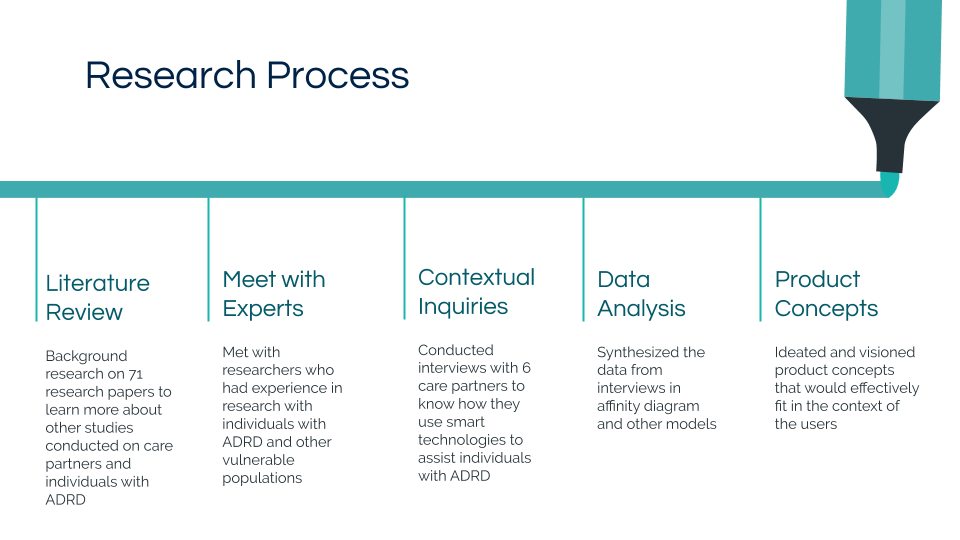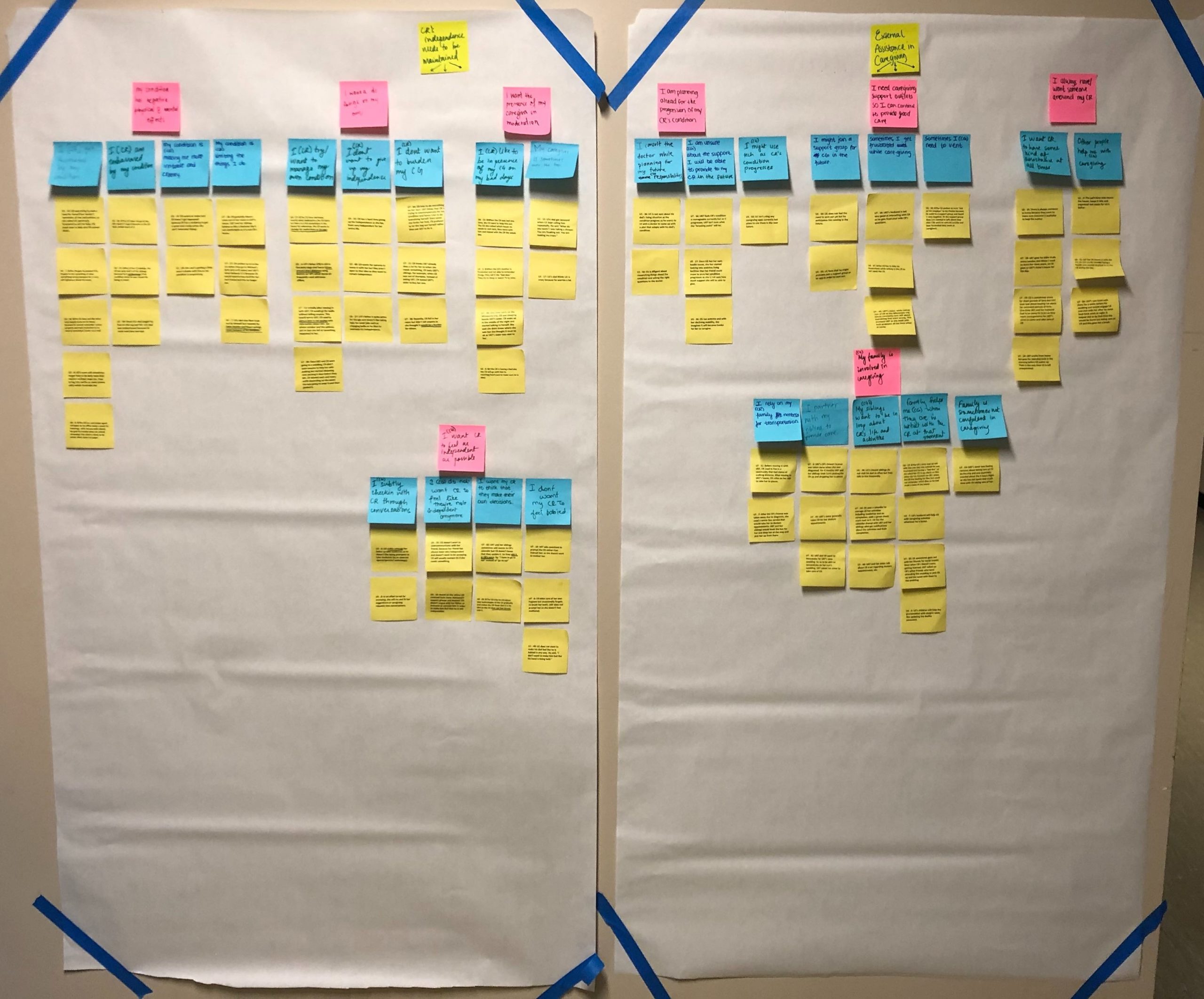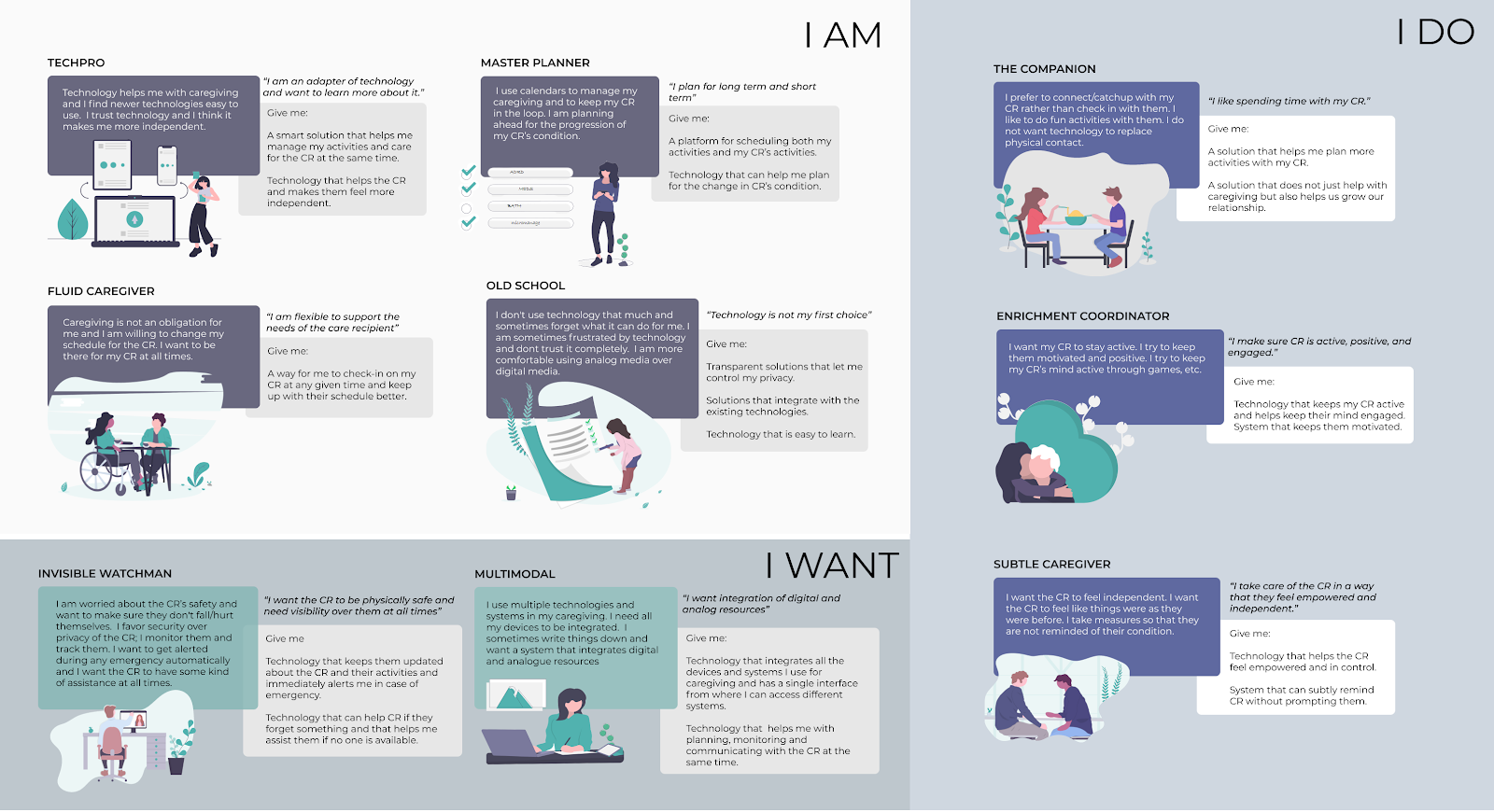aging-in-place with ADRD: Research Plase
The project aims to support aging-in-place for individuals living with early-stage Alzheimer’s disease or related dementias (ADRD) and their care partners through aiding independent living and remote monitoring.
Team: Sravya Amancherla, Dawson Hoppes, Naishi Jain, Zora Moore, Dhruvi Patel, Mishi Soni
Role: Research Lead and Product Designer
Client: Academic Project
Time: 8 months
Tools: Figma
Methods: Contextual Inquiry, Affinity Mapping, Ideation
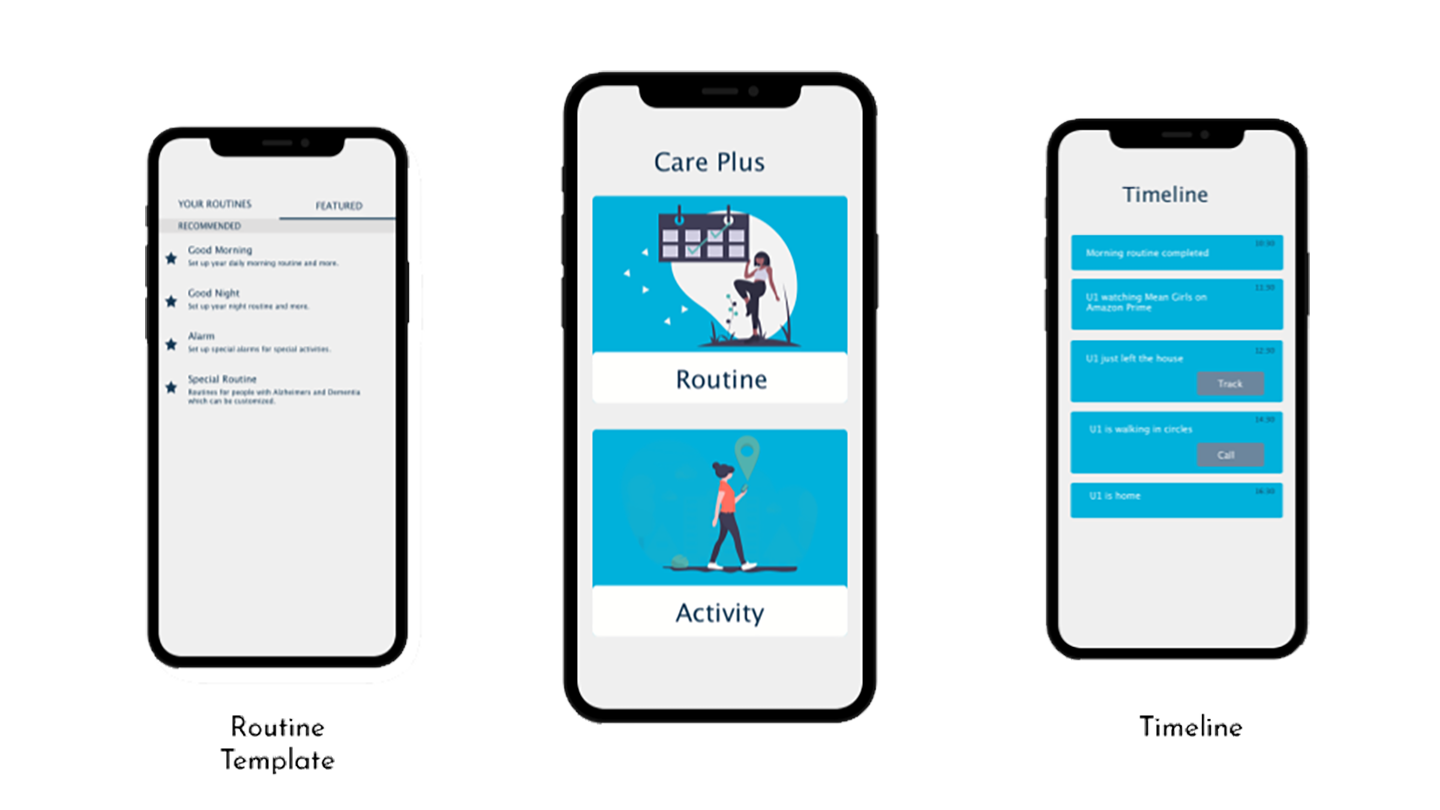
terms and
abbreviations.
ADRD: Alzheimer's Disease and Related Dementias
Care recipient (CR): Individuals with ADRD.
Care Partner (CP): People caring for individuals with ADRD. We have used the words care partners instead of the generally used term, caregivers as people in the early stages of the disease are fairly independent and the ones taking care of them are partnering in their care rather than being their caregivers.
project
focus.
Support aging in place for individuals having early-stage ADRD and their care partners.
Understand the needs, challenges and expectations of individuals with ADRD for in-home support and remote monitoring for their care partners.
- Design solutions using off-the-shelf smart technologies to support both populations
limitations.
While we wanted to interview both the user groups- people with ADRD(CR) and their care partners (CP), due to the Covid-19 lockdown, we were not able to interview individuals with early-stage Alzheimer's and related dementia. Hence, we decided to focus on the care partners.
While it would have been ideal to interview people with ADRD, the extensive background research that we conducted coupled with the invaluable inputs given by the care partners and the subject matter experts gave us important insights on their needs and helped us with the design.
We are hoping that CR interviews would be conducted in the future, and this design would be iterated accordingly.
my role.
I was the research lead and was responsible for creating the research plan and the interview guides. I also handled the IRB application process. I conducted an interview and created experience models. I consolidated the identity model and created the necessary artefacts. I collaborated with my team in conducting the background research, making the affinity diagram, visioning, and ideation. My teammates and I took turns moderating the sessions and worked together to flesh out the final concepts.
understanding the user: background research
To understand our users- people with early-stage ADRD and their care partners, we studied 71 research papers and articles and identified key themes pervading across the literature.
Integrated Care
Unfamiliar devices in a home can prompt anxiety and remind the individual they are being monitored. Future systems should integrate into the environment.
Don’t “Fix” the Person
An individual with ADRD may need more support than others, but it does not mean they are broken
Move away from illness narrative, to a narrative of skill, worth, and ability.
Safety vs Autonomy
The main priority of a care partner is to keep the individual they support, safe. Whereas, a care recipient wants to feel in control and preserve their independence. Finding the right balance is crucial.
Personalization
Everyone’s condition is different and requires different levels of support
Care partners need the ability to monitor and adapt a system’s settings in a way that it grows with the condition.
Care partner Burden
Every level of personalization adds another responsibility to the care partner. Future systems should be cognizant of this fact and think through new ways to train and make the systems user-friendly.
Holistic Care
The system has to support the individual and care partner’s overall well-being, rather than just focusing on medical issues. They help combat these feelings by supporting engagement, social participation, and leisure.
understanding our user:
contextual inquiry.
We conducted 6 contextual interviews to
- Understand the care partner's involvement in the daily life of the individual with ADRD (Extent & Activities).
- Learn from the participant about the technologies they currently use to support the individuals with ADRD and to monitor their health and wellbeing.
- Understand the participant’s needs and challenges with in-person and remote caregiving.

analysis &
synthesis.
We analysed the data and synthesized them into experience models to better understand the relationship between the care partners and care recipients, their needs, pain points, and their exact expectations from technology.
Affinity Diagram
We analysed the interviews and built an affinity map which helped us understand the broader themes in our data.
Through the affinity map, we got an insight into
- the participants' perception of care.
- their needs, issues, and expectations as care partners.
- their current usage of technology
- their expectations from the technology and its potential usage.
Identity Model
To understand the participants better, I created an identity model that captured the sources of pride, self-expression, and core values that enhance a person’s sense of self.
I identified 4 identity types corresponding to the different kinds of care partners (I AM); 2 for what different care partners need (I WANT) and 3 for how they care for the recipients (I DO). These elements are not mutually exclusive and every care partner may be a mix of these elements.
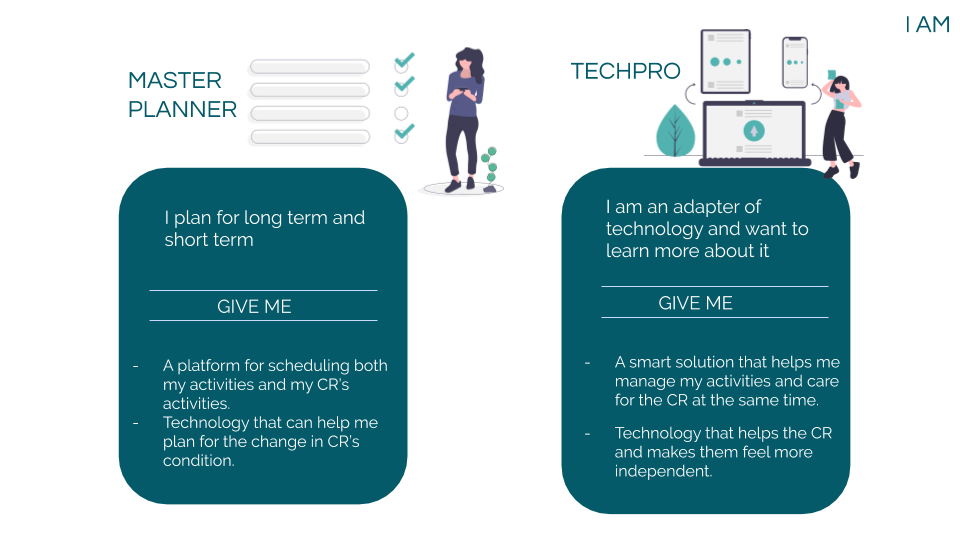
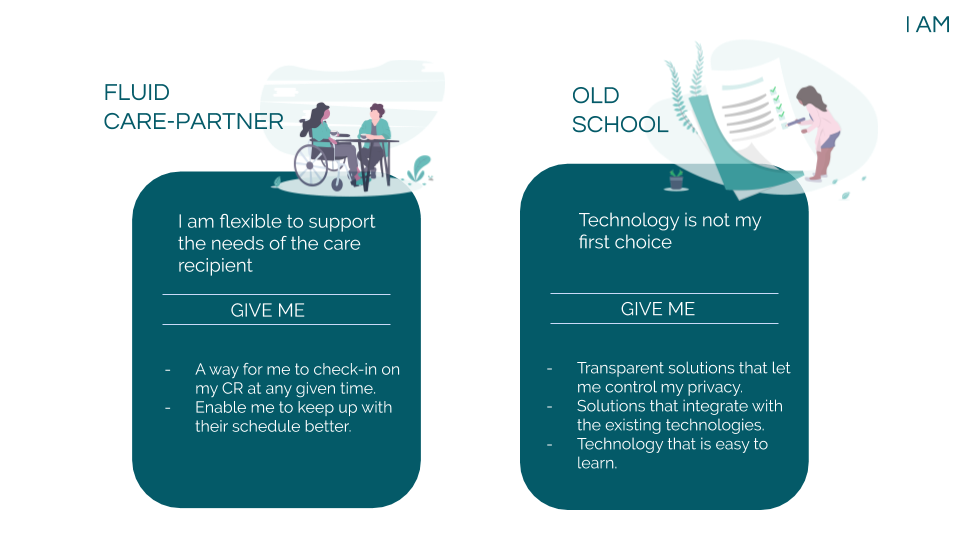
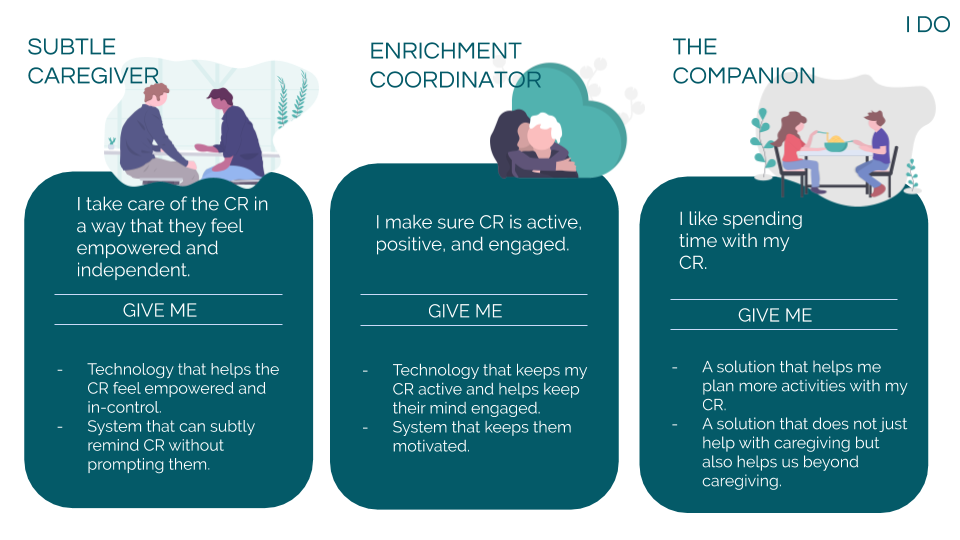
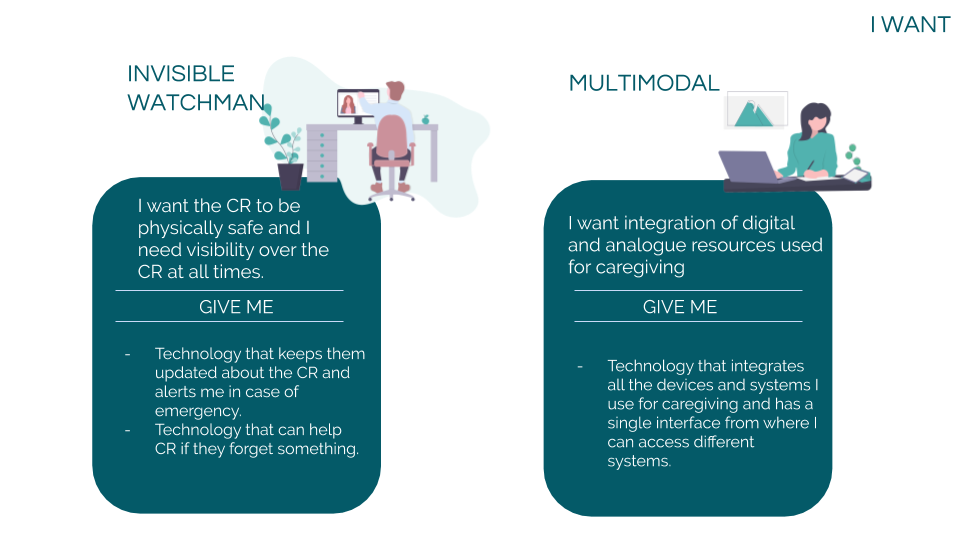
Day-in-the-Life Model
A care partner has to be there for the care recipient at all times while taking care of their personal responsibilities. So, a typical day-in-their life weaves between completing their daily tasks while monitoring and supporting their partner. We tried to understand the role technology plays in all this.
The top of the model lays out the daily routine of a care partner and shows the personal responsibilities they have to manage. (I.e. work, shopping, social life, etc.) The bottom half of the model shows the specific responsibilities they have as they support the care recipient.
key insights
Tech Keeps Me in the Loop
Many care partners relied on technology to help with both care and their personal work.
"Caregiving requires me to be more updated with the care recipient’s life and I'd like to receive updates on care recipients' activities and wellbeing."
Checking - In
Depending on the need and availability of resources, the CRs checked-in on their CPs through different means.
“My care recipient manages their own medication, but I like to check to pillbox later in the day to see if they actually took their meds.”
Caregiving is Part of My Life
Caregiving was an important part of their life and they tried to manage their day and personal tasks around it.
“I manage my time and make sure my caregiving breaks don’t affect my workflow.”
Tech is Part of My Routine
CPs used technology as a part of their daily routine. These helped them keep in touch with the CRs and keep up with their activities.
"I use tech for checking-in through texting/calling, tracking my care recipients through GPS and scheduling our time."
ideation & product concepts.
From our research and analysis, we created some preliminary product concepts. These were refined and iterated in the design phase.



Care+
Care+ is a mobile application that leverages smart speakers to provide assistance with various caregiving activities and regular subtle check-ins
It can be integrated with any smart speaker device such as Amazon Echo or Google Home
Features:
Personalizable routine template: It provides routine templates specifically for people with ADRD that can be personalized based on the needs of the CR.
Live activity updates: It allows the care partner to view their care receiver’s daily activities and provides alerts/notification to the care partner for specific incidents that might require the care partner’s attention
next steps.
To read about the design phase, click here.

